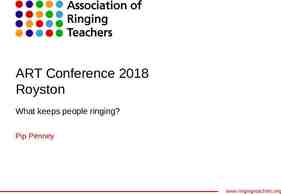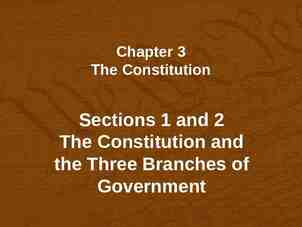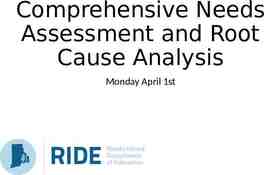Community Mapping Knowing our students, knowing our community,
19 Slides7.06 MB
Community Mapping Knowing our students, knowing our community, knowing ourselves.
How might our students be influenced by their communities?
Interconnectedness
What is Community Mapping? Community mapping “is a vibrant way to tell the story of a neighbourhoood. Mapping involves identifying relationships, needs, and resources and recording them in the form of a map. It highlights the rich complexity between how people, animals, and the environment interact and what issues might arise as a result of those interactions. It takes into account many different way s of ‘knowing’ about a place.” (Jane Goodall Institute of Canada Community Mapping Guide)
How is This Different From Going For a Walk? Different walks have different intents: relaxation, exercise, safety, travel. Our intent: develop an understanding of students’ communities and their relationships to those communities to better understand them as learners.
Intent - Understand our students better so that we might respond to their needs more appropriately. - Understand the community we are a part of and how we might be a better community partner. - Recognize the interconnected and interdependent nature of communities. - Be more comfortable as a community partner.
Task Make a map! .of what? - assets (things that make the community strong) - what’s not present here (that might be present in other neighbourhoods.) - art - transportation routes - community places (parks, libraries, etc.) - places of play - something that gives you a deeper understanding of your students (maybe relating to your inquiry question)
Task Make a map! .of where? - consider the boundaries that you will travel/use. - focus on the school community of the EST. Make a map! how? - hand-drawn from observation - computer-generated simulation such as Minecraft - imposed over a map from Google Maps - a diorama - video (how recorded/collected? Camera? Spark?)
Task Make a map! .with who? - will this just be in your partnership? - will you include students so that they can guide you? - who might you make plans to interview (community partners) during your walk?
Task But I already understand my community! - What is your hunch? - Be open to surprises. - Be ready to share your surprises.
Criteria - You have a map that represents the community. - Your map includes information that generates some understanding about the community. (This might be new understandings for you or might reinforce a hunch you had suspected.)
What Goes on a Map? Carefully consider what kinds of information you want to collect before going on your community walk. How will you collect it? Will you need to call in advance? Before the Walk - previewed map info (Google Maps, etc.) - contact community members During the Walk - buildings - math examples - art - info from interviews
When Will This Happen? 1. Planning time as part of the partnership meeting – March 4 or March 11 (Partnership Dates) 2. Community walk – May 12 AM or May 28 AM or JEL Time 3. Sharing and reflection of walk – May 12 PM or May 28 PM
Next Steps 1. What will you be trying to observe on your walk? 2. Where are you walking/what will be your boundaries? 3. How will you create your map? 4. What information will you put on your map? 5. Is there anyone you will need to contact in advance to schedule interview/meeting times? 6. How will you take notes/observations/reflections/video so that you will be able to share with the group after your walk? 7. Are there school neighbours who you might walk with? 8. Could students be a guide?
























